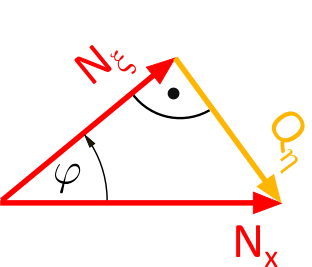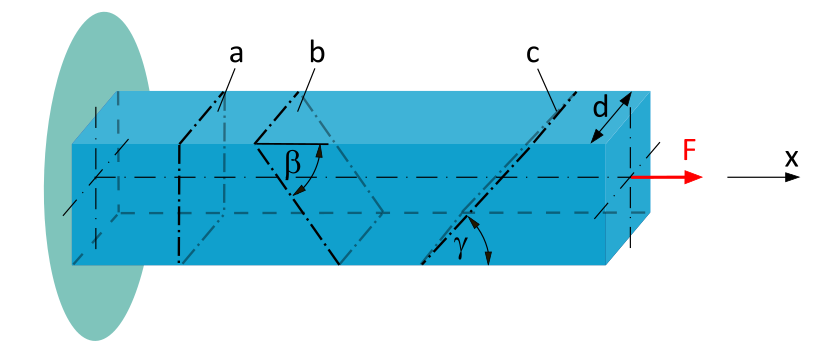Step 2: Determining the Normal Force \(N_\xi\) as a Function of the Angle \(\varphi\)
Buckle up! In this step, we embark on an exciting journey into the world of trigonometry and reveal the true identity of the normal force \(N_\xi\) using the cosine trick.
First, let's take a close look at the force triangle in Figure 1.2.10. A trigonometric relationship is hidden there between the angle \(\varphi\), the normal force in \(\xi\)-direction \(N_\xi\), and the normal force in x-direction \(N_x\).

Imagine \(N_\xi\) is a shy detective hiding behind \(N_x\). But with the cosine trick, we can unmask him!
- Known: Angle \(\varphi\) and hypotenuse \(N_x\)
- Wanted: Cathetus \(N_\xi\)
With a little bit of rearranging, we have:
(3)
Aha! The normal force \(N_\xi\) s proportional to the x-component \(N_x\) and the cosine of the angle \(\varphi\). The larger the angle, the more \(N_\xi\) dares to come out of hiding. But: Since \(\cos(\varphi)\) decreases with increasing \(\varphi\), \(N_\xi\) also decreases ab.
- Formula (3) is your magic key to calculating the normal force \(N_\xi\).
- Angle \(\varphi\) and force \(N_x\) are the ingredients for the magic potion.
- With the cosine trick, you can unmask the secret identity of the normal force!
P.S.: If you need more magic, take a closer look at the trigonometric relationships.
P.P.S.: Don't forget that \(N_\xi\) can be positive or negative. Depending on the direction of the force.

Normal and Shear Stress at an Arbitrary Section Angle
A clamped beam with a square cross-section (side length \(d=20~\mathrm{mm}\)) is subjected to a tensile force \(F=10~\mathrm{kN}\) along the beam axis.
Determine the average normal stress and the average shear stress...
- ...acting in cross-sectional plane a.
- ...acting in cross-sectional plane b (\(\beta = 50°\)).
- ...acting in cross-sectional plane c (\(\gamma = 40°\)).